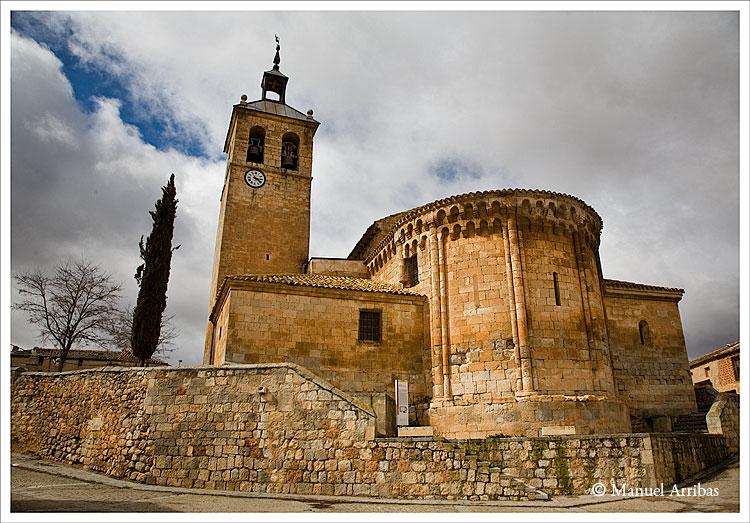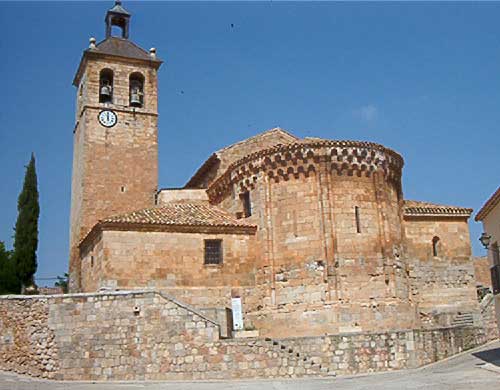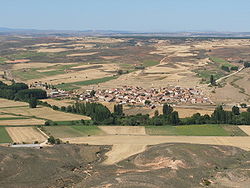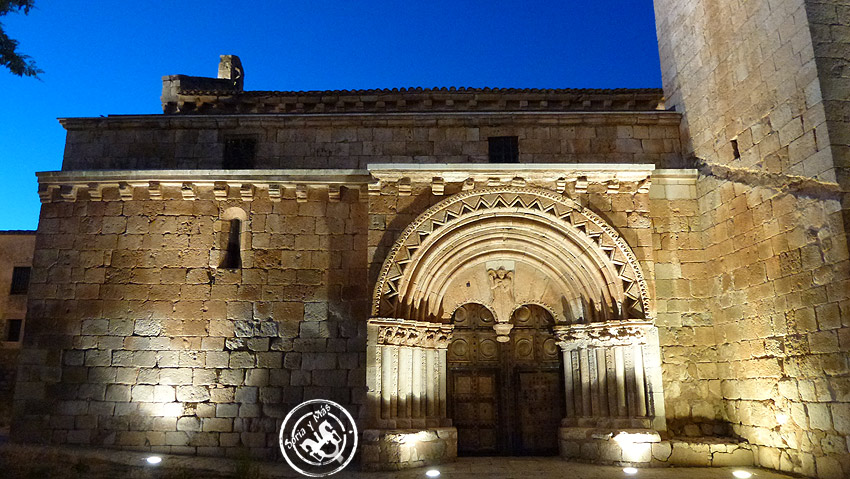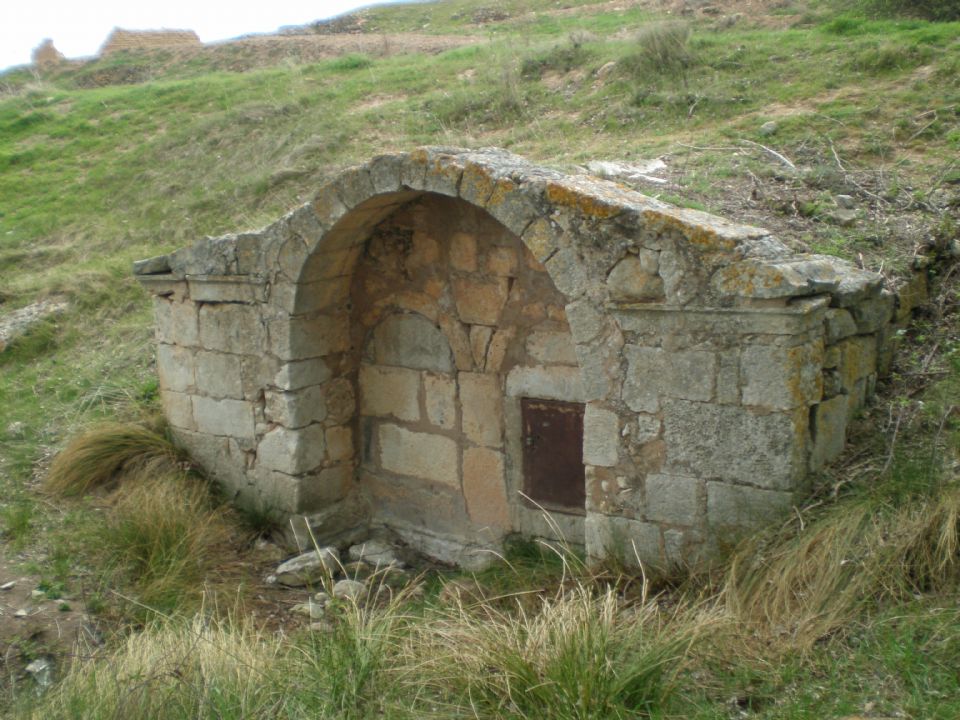Caltojar
Caltojar is a small community in northern Spain ( municipio ) with only 70 inhabitants (as of 1 January 2013) in the province of Soria in the autonomous community of Castile -Leon. The municipality includes the former villages and Casillas de Berlanga Bordecorex, both only have about ten inhabitants respectively.
Location
Caltojar lies in a hollow near the Río Escalote about 37 km ( driving distance ) southeast of Burgo de Osma; the picturesque neighboring village of Berlanga de Duero is located about 13 kilometers north-west; the provincial capital Soria is located about 63 kilometers north-east.
Demographics
In the second half of the 19th century up to the year 1960, the place was always between 400 and 700 inhabitants.
Economy
Due to the altitude the agronomic yields are low. Livestock and dairy industry therefore always played an important role. Due to the mechanization of agriculture, the population of the town has declined sharply in the second half of the 20th century.
History
Not much is known about the history of the small town. In the Islamic era the area was depopulated and was of watchtowers ( atalayas ) against Christian attacks backed up. In the 11th and 12th centuries it was of immigrants from the Christian north, but again colonized from the south of Spain ( repoblación ). The Romanesque church was built in about 1200, had already reached the place as a certain population. In the late 20th century the hamlet of Casillas de Berlanga Bordecorex and were incorporated.
Attractions
- The church dedicated to St. Michael the Archangel San Miguel Arcángel from the late 12th or early 13th century is well preserved; the exterior of the apse is decorated exceptionally rich with a double arched frieze below the eaves. The tower of the church was in a later period - probably for reasons of stability - added. However, the special treasure of the church is the multi- stepped back Archivolts portal on the south side, which is above a hanging keystone in the center shows a statue of the Archangel Michael. The outer sheet travel is a tad Fries. The Romanesque north portal of the church was eventually bricked up; the unadorned Archivolts arches were preserved. The nave and two aisles surprised by its open space effect - four pillars with half columns presented support the transverse arches supported by groined vault of the central nave and two side aisles. Only two capitals show figural jewelry; the others are designed largely unadorned. In the 17th century the church was given a Baroque altarpiece, fanning the architectural rigor of the Church something.
The municipal area of Caltojar are the remains of three Islamic towers from the 10th century, which can be explored in the context of two-to three-hour hikes:
- When Ojaraca Atalaya about four kilometers from the village away one half of the tower shaft is broken, but its high altitude ( 1119 meters) and its dimensions (height 7.50 m, diameter 5.10 m, wall thickness 1.20 meters ) are still impressive.
- The Atalaya La Viruela is only about two kilometers from Caltojar. He's still get up to a height of nine meters; its dimensions are otherwise those of Atalaya Ojaraca comparable. Today, a spiral staircase leads up to about 2.50 meter high entrance.
- From the third watch tower ( Atalaya La Corona ) quarry stones are still preserved.
- The hamlet is my finished Bordecorex, with approximately ten people has a single nave, almost windowless Romanesque church with an articulated by pilasters and decorated by a running beneath the eaves arched frieze apse. Also the consoles below the eaves of the nave are decorated varied. Of the wide prospect hatches above the bell chamber in the womb penetrated acting, completely unstructured but built from the exact carved stone material west tower is to overlook the entire valley widely well. The high churchyard wall on the south side of the church reinforces the defensive character of the Church.
- Southwest of also only about ten inhabitants, the village lies the hermitage ( ermita ) San Baudelio de Berlanga, the surprise inside with a Mozarabic palmette pillars. Here the remains of Romanesque frescoes can be seen, but some of the most interesting designs (elephant, camel, etc.) were taken in the years 1922 to 1925 and are now in the finest museums in the USA - The Cloisters (New York), Museum of Fine Arts, Boston and Indianapolis Museum of Art others will be seen in the Museo del Prado in Madrid.
Palmette pillars
Columns of the Tribune
Elephant with castle
Environment
More Romanesque churches are also located within the Comarca (see web link).

